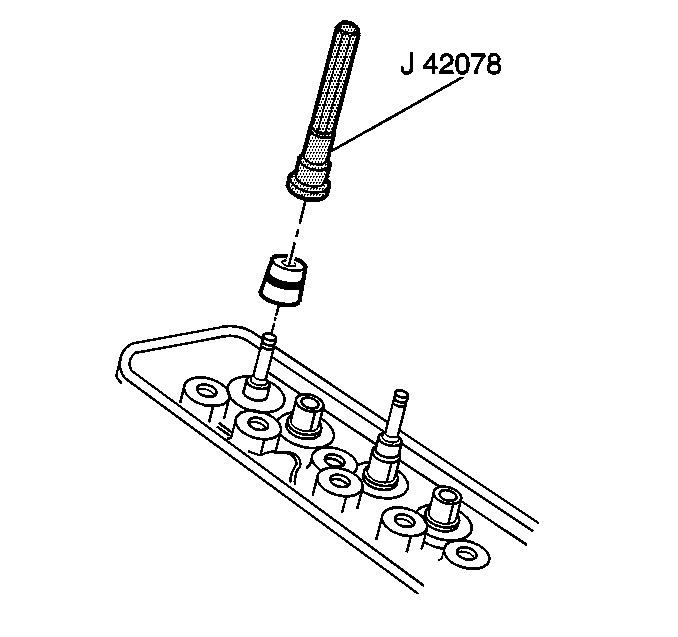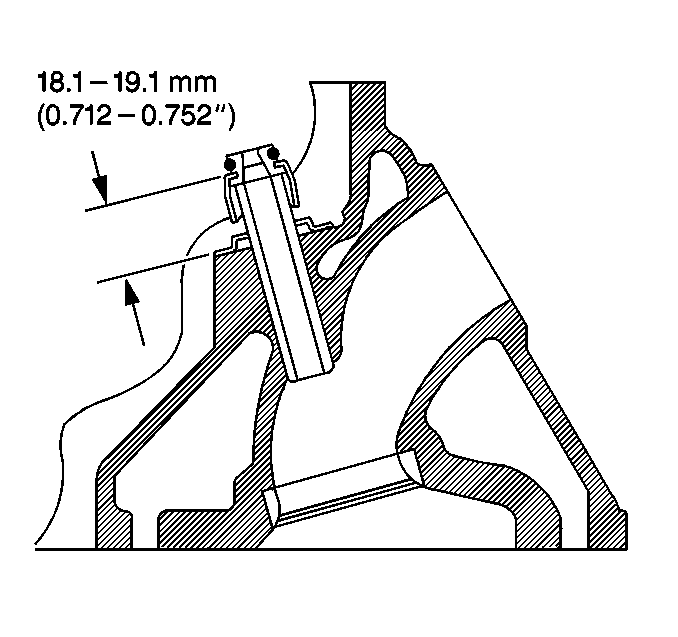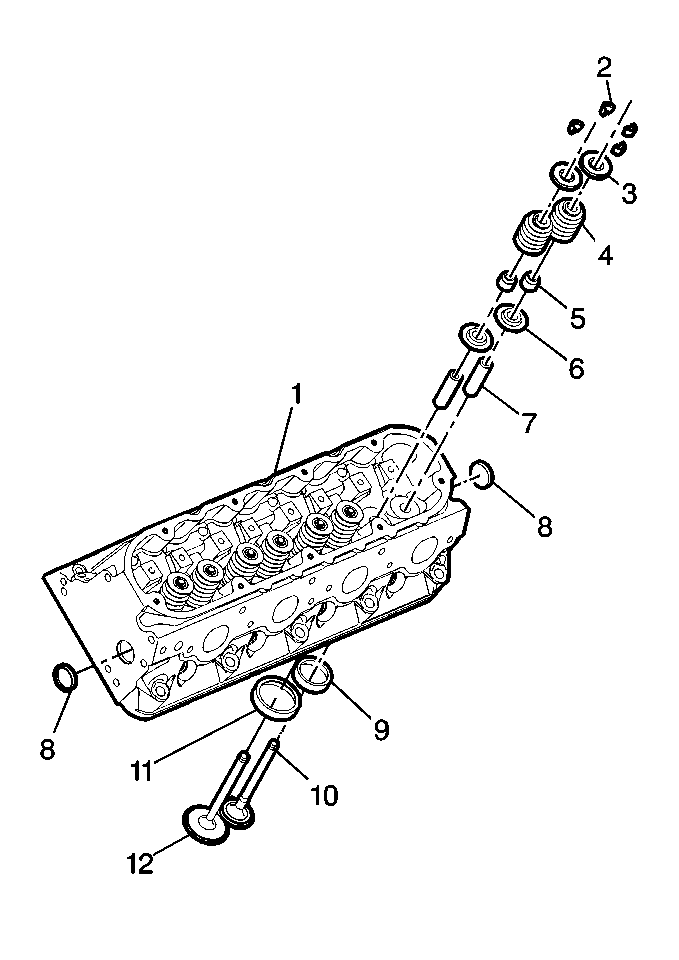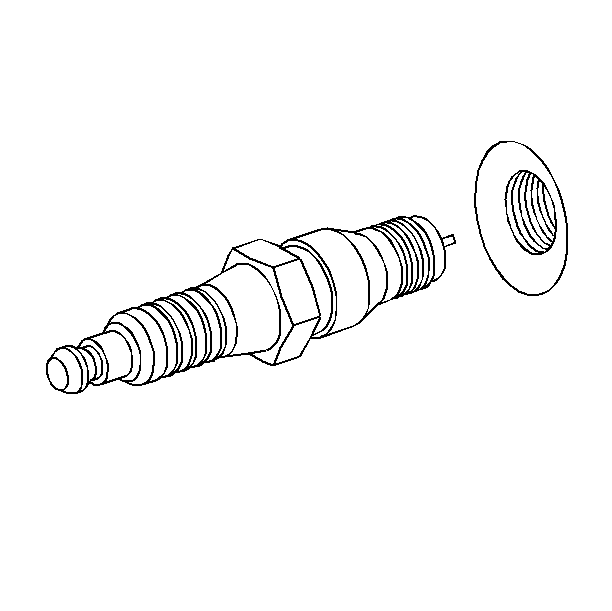
Important: The valve stem oil seal alignment and position on the valve guide is
critical.
An improperly installed valve stem oil seal may lead to excessive oil
consumption, increased vehicle emissions, or component damage.
- Install the valve stem oil seal (5) onto the guide (7).
| 1.1. | Lubricate the valve guide (7) and valve stem (5) oil seal with
clean engine oil. |
| 1.2. | Install the valve stem oil seal onto the valve stem. Push the
seal down until the seal contacts the valve guide. |
| 1.3. | Push or lightly tap the J 42078
until the tool bottoms against the valve spring shim (6). |

- Measure the valve stem
oil seal for the properly installed height.
There should be a 18.1-19.1 mm (0.712-0.752 in)
gap between the top edge of the oil seal body and the shim spring seat surface.

- Install the valve spring
(4).
- Install the valve spring cap (3).
- Compress the valve spring (4) using the J 38606
.
- Install the valve stem keys (2).
| 6.1. | Use grease to hold the keys (2) in place and remove the J 38606
. |
| 6.2. | Make sure the keys (2) seat properly in the groove of the valve
stem (10,12). |
| 6.3. | Tap the end to the valve stem (10, 12) with a plastic faced hammer
to seat the keys (if necessary). |

- Remove the J 22794
.

Notice: Use the correct fastener in the correct location. Replacement fasteners
must be the correct part number for that application. Fasteners requiring
replacement or fasteners requiring the use of thread locking compound or sealant
are identified in the service procedure. Do not use paints, lubricants, or
corrosion inhibitors on fasteners or fastener joint surfaces unless specified.
These coatings affect fastener torque and joint clamping force and may damage
the fastener. Use the correct tightening sequence and specifications when
installing fasteners in order to avoid damage to parts and systems.
- Install the spark
plug.
Tighten
Tighten the spark plug to 15 N·m (11 lb ft).
- Install the valve rocker arms, pedestal, and valve pushrods. Refer
to
Valve Rocker Arm and Push Rod Removal
.








